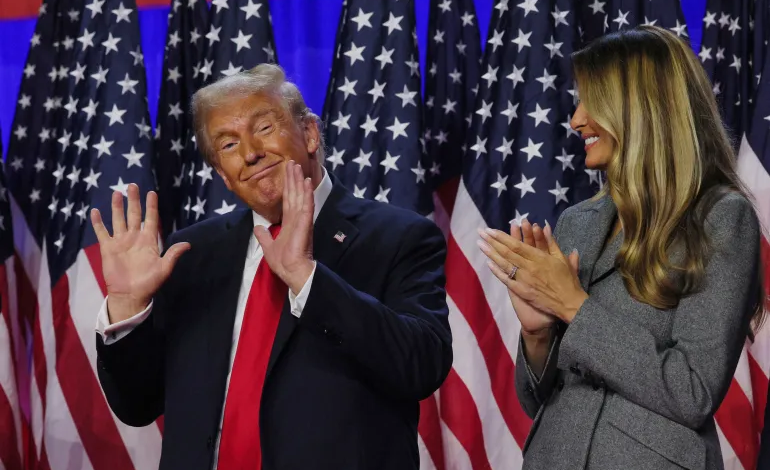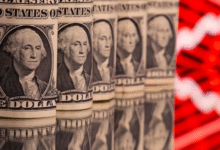The Economic Impact of Donald Trump’s Return to the White House: Winners and Losers in Savings and Investment Tools


Donald Trump’s potential return to the presidency is seen as a double-edged sword for the economy, presenting both opportunities and challenges across various investment and savings instruments. Here’s a detailed look at the anticipated effects across key sectors:
1. Currency Markets
A Trump presidency is often associated with a strengthening U.S. dollar. Investors anticipate his policies to fuel inflation and economic growth, necessitating higher interest rates by the Federal Reserve to prevent overheating—an upward driver for the dollar.
At the same time, Trump’s plans to impose tariffs, pressure European allies for increased defense spending, and weaken multilateral institutions are expected to stifle growth in other global regions, further enhancing the dollar’s appeal.
Analysts at Citigroup project a 3% rise in the dollar should Trump reclaim the presidency. Currently, the dollar index—tracking the currency’s strength against six others—has risen 1.8% to 105.28 points.
However, other currencies like the euro may see sharp declines, possibly dropping below parity with the dollar if Trump implements tariffs and domestic tax cuts. Similarly, the Chinese yuan, which fell significantly during Trump’s first term, could continue its downward trajectory.
Carry trades, involving borrowing low-yielding currencies like the yen and Swiss franc, could gain renewed momentum. Yet, the Swiss franc might retain its safe-haven status, supported by high-value exports and resilience during inflationary periods.
2. Stock Markets
Trump’s promises of deregulation, corporate tax cuts, increased oil production, and stricter immigration policies are seen as growth drivers, with sectors like banking, technology, defense, and fossil fuels standing to benefit.
Goldman Sachs estimates that reducing the corporate tax rate from 21% to 15% could lift the S&P 500 by 4%. However, the legislative viability of such tax reforms remains uncertain.
Conversely, Trump’s protectionist trade policies and a hardline stance on China could escalate costs, dent profits, and hurt multinational corporations. For instance, the Dow Jones Industrial Average rose 1%, the S&P 500 climbed 1.23%, and the Nasdaq gained 1.43% recently, reflecting optimism.
Outside the U.S., a strong dollar, higher interest rates, and trade tensions may disproportionately harm multinational exporters. Sectors sensitive to tariffs, like semiconductors, automotive, and clean energy, could face volatility.
3. Bonds
Investors are growing wary of the U.S. government’s swelling debt and budget deficit, fearing higher borrowing costs or increased Treasury yields.
Trump’s spending plans could add $7.5 trillion to the deficit over the next decade, significantly outpacing proposals by Kamala Harris. Treasury yields have already risen by 50 basis points in anticipation of a Trump victory.
The inflationary pressures from Trump’s policies may limit the Federal Reserve’s ability to lower interest rates, keeping yields elevated globally and tightening monetary conditions in other economies.
4. Commoditie
Trump’s energy policies, favoring expanded oil and gas drilling while rolling back environmental regulations, are likely to sustain the U.S.’s position as the world’s top oil producer.
While these measures could keep U.S. crude oil prices relatively low, sanctions on Iran could restrict global supplies, potentially driving prices higher. Additionally, Trump’s promise to refill the Strategic Petroleum Reserve to unprecedented levels could further influence market dynamics.
Conversely, agricultural commodities like soybeans may suffer from renewed trade tensions with China, the largest importer. Soybean prices have already declined by 25% this year, reflecting such concerns.
5. Emerging Markets
Emerging economies could face substantial headwinds under Trump’s policies. Proposed tariffs on Mexican car imports, for instance, might weaken the peso to levels not seen in over two years.
Other currencies, like South Africa’s rand and Brazil’s real, could also come under pressure, while sectors tied to Chinese technology, such as chip manufacturers in Taiwan and South Korea, remain vulnerable.
However, emerging markets with strong domestic growth stories, like India and South Africa, or those with unique export profiles, like Chile (copper and lithium), might find relative stability.
6. Sustainable Investments
Trump’s approach to environmental regulations could benefit traditional energy sectors, while stocks tied to renewable energy might face challenges.
Plans to halt spending under the Inflation Reduction Act—focused on subsidies for electric vehicles, solar, and wind energy—could undermine clean energy initiatives. However, achieving such rollbacks would require congressional approval, and many Republican lawmakers have expressed support for aspects of the act.
Additionally, Trump’s vow to remove SEC Chair Gary Gensler could weaken the influence of sustainable funds, potentially diminishing their appeal to investors.
Trump’s return to the presidency is poised to create ripple effects across global markets, making careful sectoral analysis crucial for investors. While opportunities abound in certain areas, the broader implications of his policies suggest a complex and volatile economic landscape.








